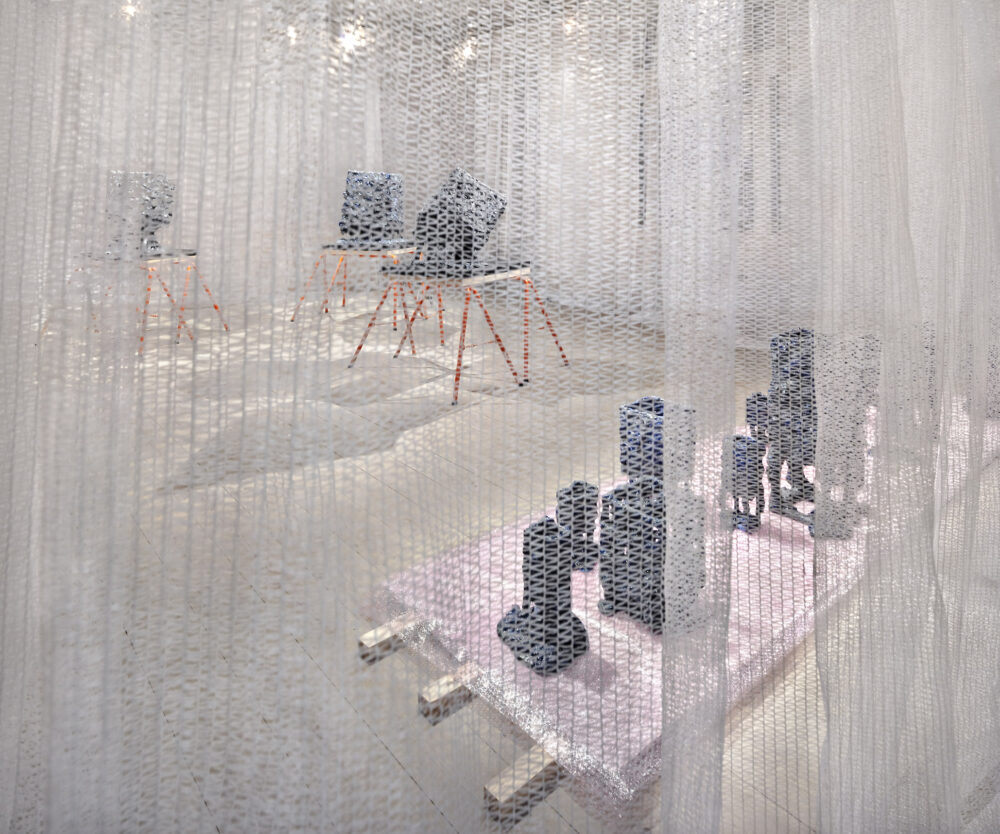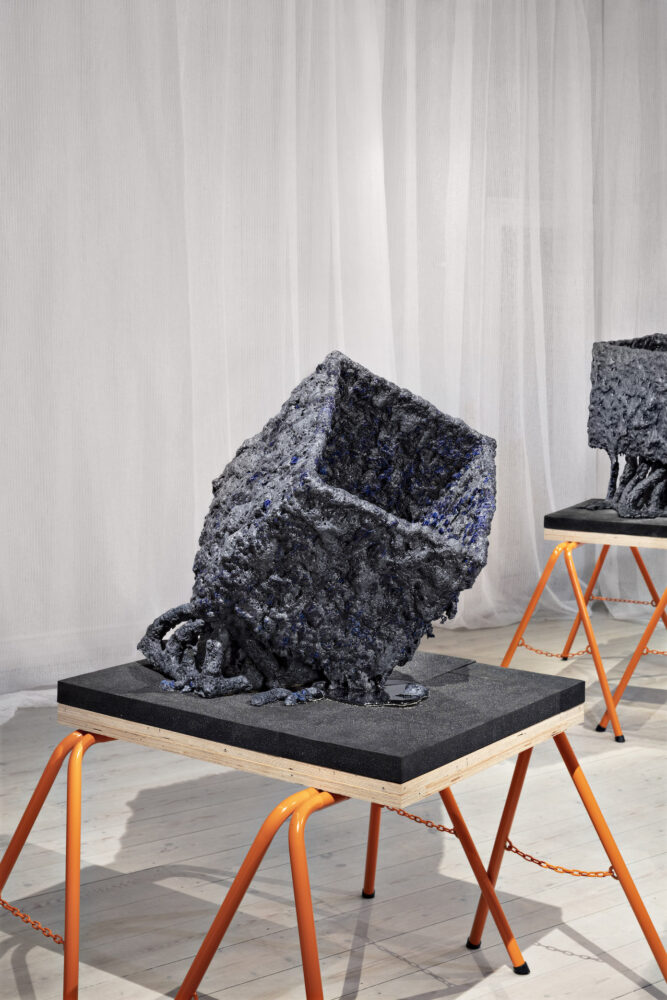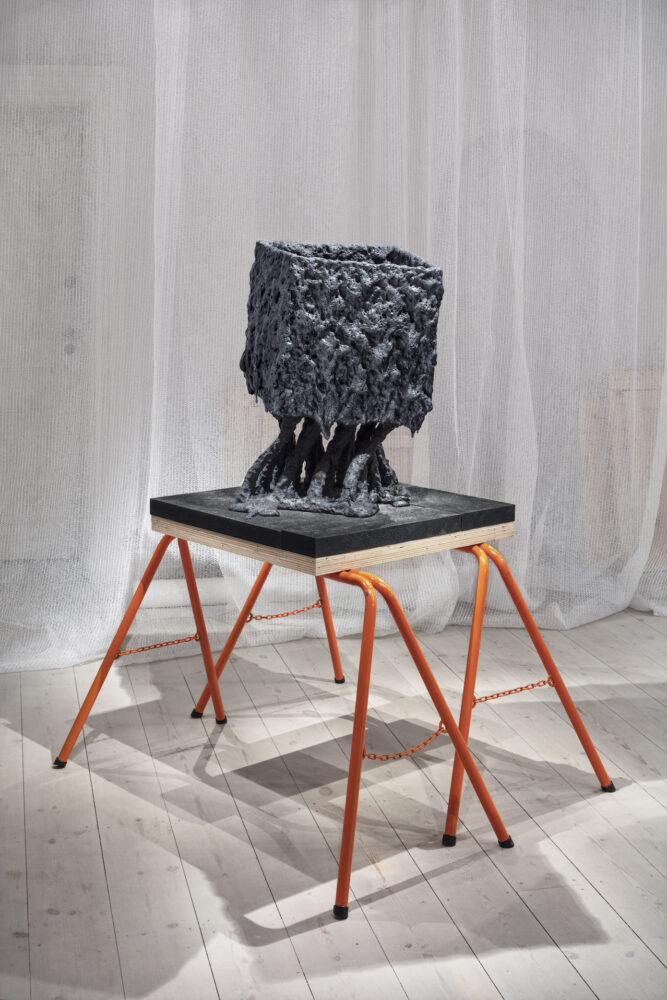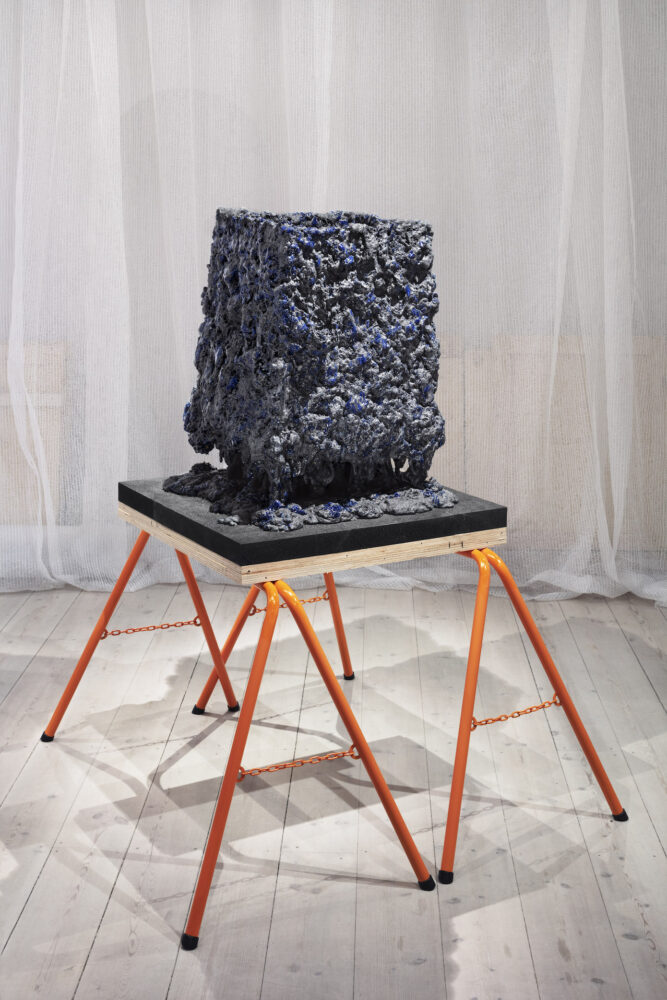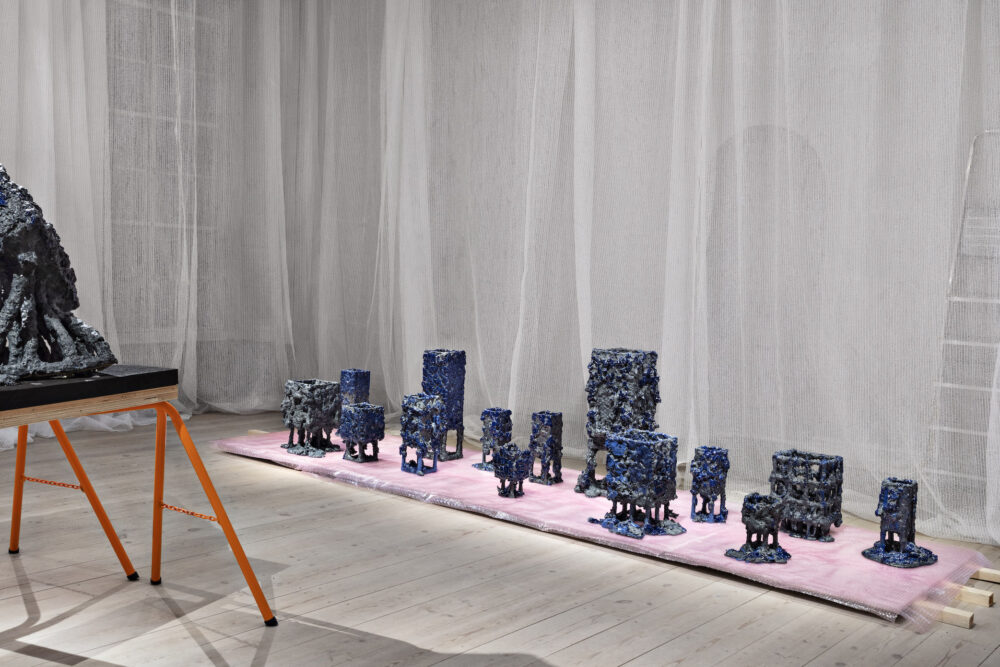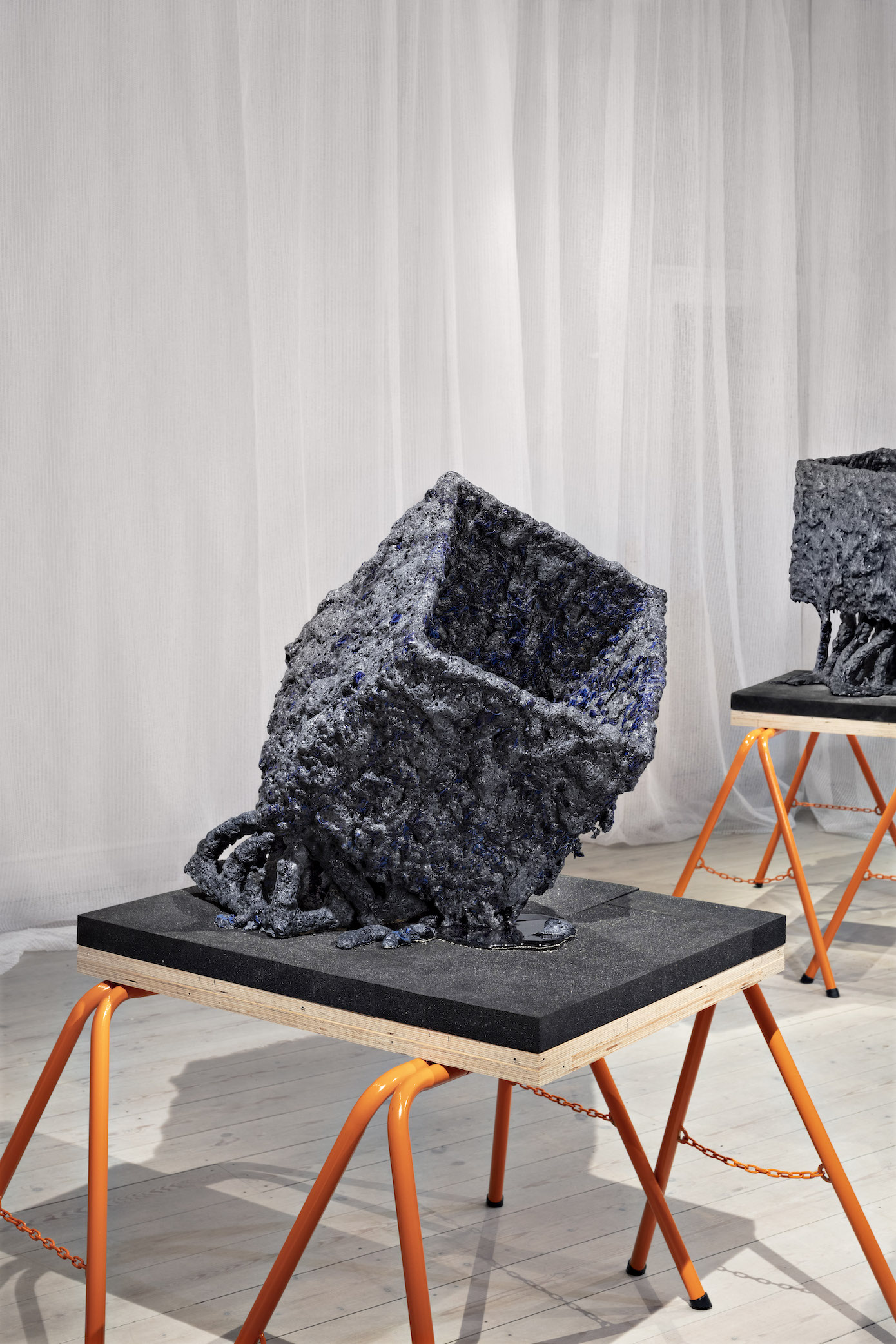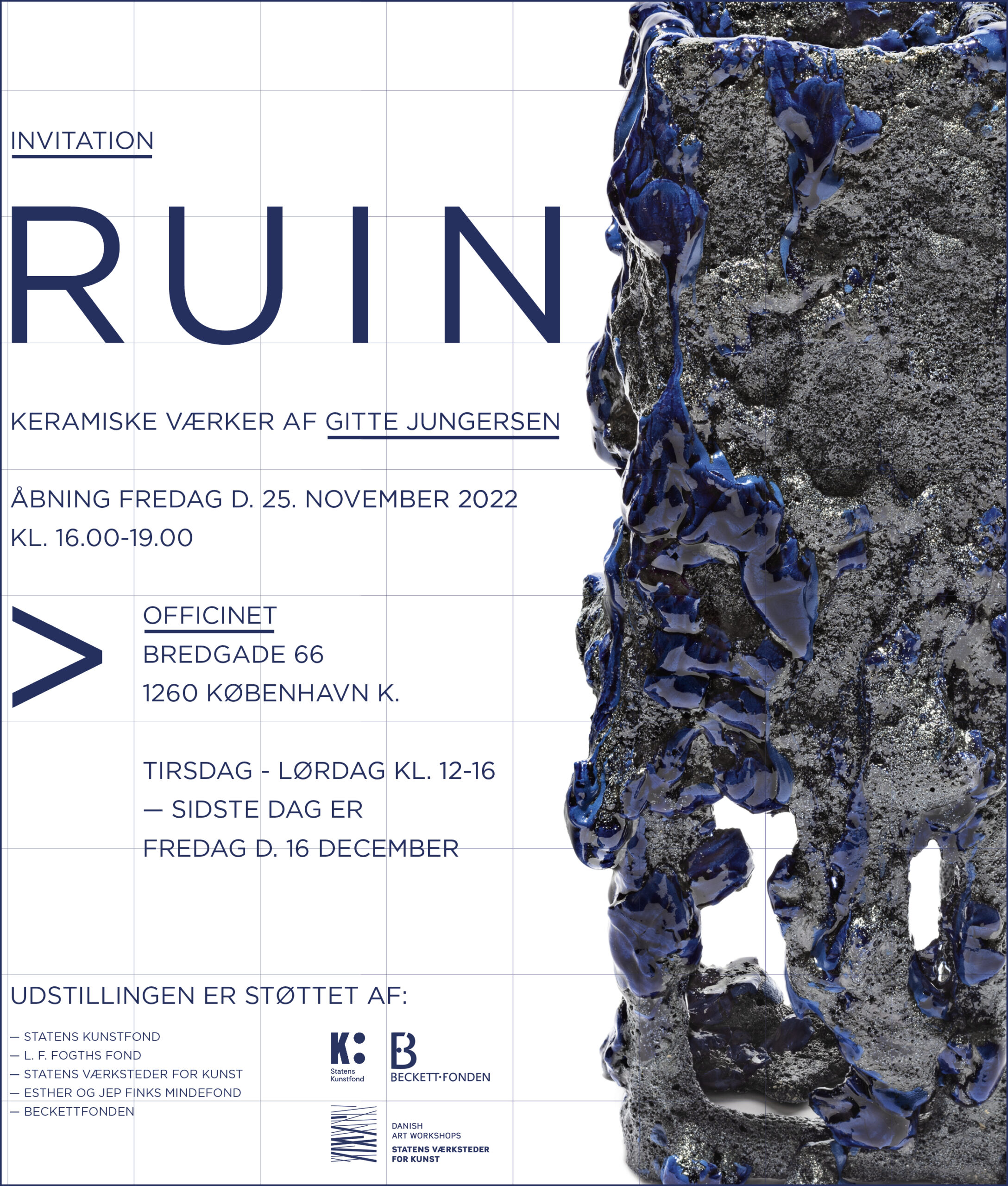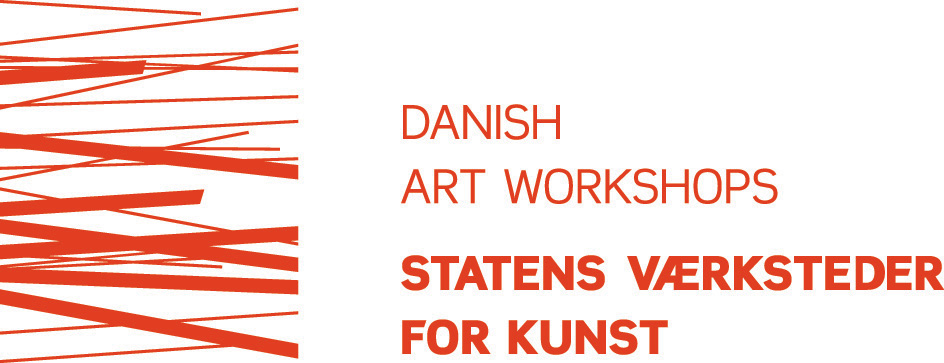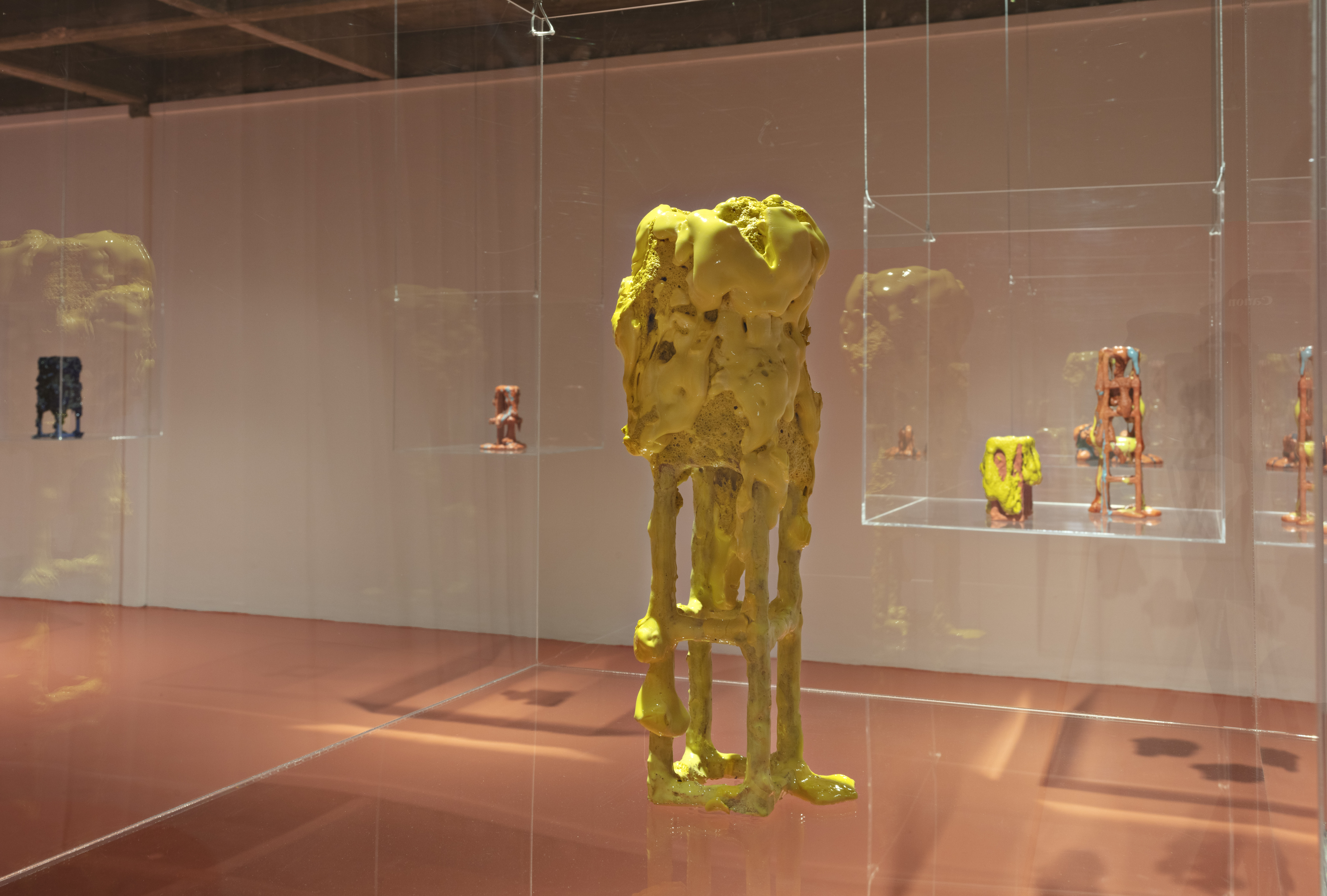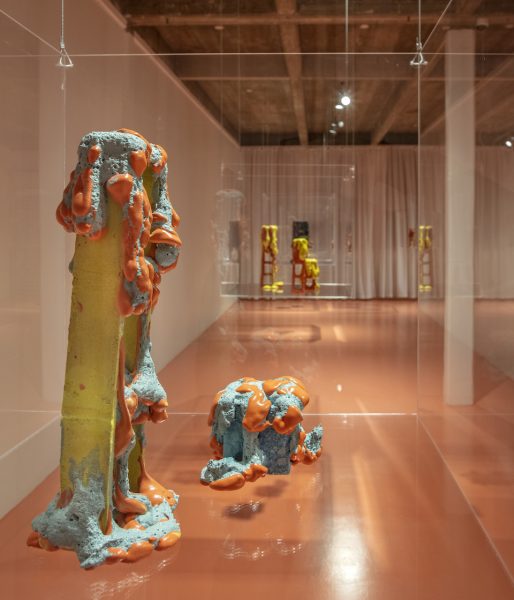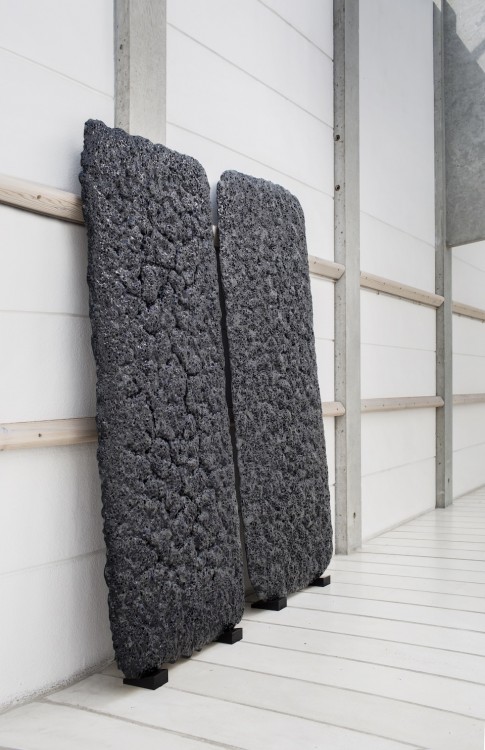The classic exhibition space at Officinet* has been transformed into a rough construction-site version of ‘the white cube’. A scaffolding net adds contrast and creates its own room within the room. Through the net, visitors glimpse bits and pieces from the exhibition construction: dismantled transport crates, a ladder, an abandoned folding rule … Playing with impressions, the scenario suggests that the exhibition has only just been unpacked or is perhaps in the process of being packed up. This uncertainty sows doubt about the stability of the exhibition situation itself and underscores the processual character of the exhibition pieces.
A Quivering Undertone
The objects in the Ruin exhibition were created during a residency at the Danish Art Workshops in autumn 2022. In a sense, Ruin is a continuation of former series of works, but this time, I have returned to the scene of the crime with a different approach. The objects refer at once to the familiar ceramic archetype of the vessel and to a more open, abstract structure that sparks associations pointing in many different directions. To a ceramic artist, the vessel is almost like the painter’s white canvas: a starting point that can be reinterpreted over and over in a search for new and contemporary expressions. I previously worked with cubic vessels, their simple shape providing a basis for the organic movements of glazes (the Cubes series, 1995–2007). Another project that this exhibition draws on is Deform from 1995–97. It consisted of a series of basic geometric shapes that were exposed to ever higher temperatures, causing them increasingly to melt and transition towards something formless and lumpy.
My work on Ruin unfolded as one big experiment, as I chose to maximize the loss of control that the firing always represents in the ceramic process, where melting is a crucial factor in the emergence of the expression. I let the glazes flow freely, virtually dissolving the surfaces as they slid down the form. I also pushed the shape of the objects to the point of compromising their integrity, causing some of them to deform and come close to collapse. In many of the objects in this series, the vessel’s inner cavity is just as significant as its exterior form due to the mass of glaze flowing down the inner walls and creating the impression of a landscape or a grotto inside the object. These massive layers of glaze create an expression reminiscent of geological processes, and to me, the objects occupy a position in between the raw powers of nature and man-made cultural objects.
All the glazes are coloured with cobalt oxide, a politically ‘hot’ metal that is used in lithium ion batteries and hence a highly sought-after and limited resource. In the chemical composition of the different glazes, the cobalt unfolded in varying shades of colour and texture, ranging from a greyish blue lava-like mass to a deep blue high-gloss shine. In ceramics, cobalt is known from the time of the Chinese Tang Dynasty in the 7th century and all the way up to today’s blue fluted porcelain. In a glaze, cobalt oxide can result in anything from a cheap ingratiating tone to an aristocratic blue.
In my approach to ceramics, the material is constantly exposed – there is constantly something happening to it, and the objects emerge as an accumulation of processes that are deposited as a representation of energy and time in the physical matter. I pushed the forms and glazes to the edge of what is possible, building too tall and spindly, too big and thin, firing at too high a temperature. I covered the objects with huge amounts of different glazes, sometimes layering glazes with opposite physical properties: some layers bubbling up and expanding, others contracting into flakes or running and pooling into deep lakes. I fired objects multiple times, added new layers of glaze and then fired them again at a higher temperature, driving the object to ever higher levels of deformation. I did not stop until an object had attained a certain quivering expression, teetering on the edge between creation and destruction. The objects may appear to be in a transformative process, representing a tangible point on the object’s timeline, since just as there is a ‘before’, there will also be an ‘after’. Ultimately, the objects are going to break up completely, dissolve and enter into new physical manifestations.
